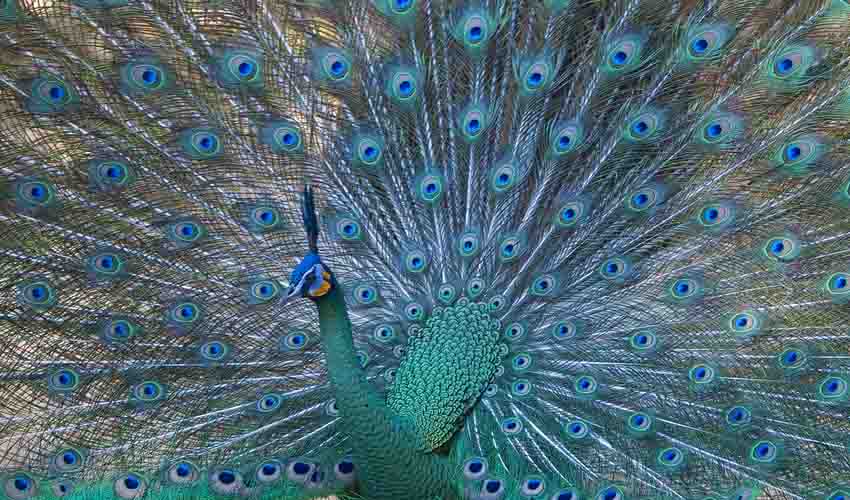Pavo – Peafowls
The genus of Indian national bird, as well as the largest and heaviest birds of their family, native to Southeast Asia
Peafowls are among the most ornate and recognized birds in the world, primarily due to the males’ extravagant plumage and the iconic “eyespot” patterns. These birds are native to the forested areas of South Asia and have been introduced to many other parts of the world.
Male peafowls, known as peacocks, possess a magnificent train of long upper tail coverts that surpass their actual tails and are adorned with iridescent eyespots. These trains can reach up to 2 meters long and are used in mating displays to attract females (peahens). During the display, the peacock fans out this train into a shimmering spectacle of color and pattern, which is believed to signal the male’s fitness and quality as a mate. In contrast, the peahen’s plumage is more subdued, with shorter tail coverts that serve as camouflage rather than for display.
In terms of diet, peafowls are omnivorous and opportunistic feeders. They consume a variety of food items, including seeds, fruits, plants, insects, and small reptiles. They play a role in their ecosystems as both seed dispersers and as controllers of insect and small animal populations. Peafowls living in proximity to human cultivation can also become agricultural pests, feeding on crops such as tomatoes, chilies, bananas, and groundnuts.
Peafowls have a significant place in various cultures and religions. In Hinduism, the peacock is associated with the deity Saraswati and is also the mount of the god Kartikeya. In Greek mythology, the peacock’s plumage is said to symbolize the eyes of the stars. Beyond their mythological and cultural significance, peafowls have also been kept as ornamental birds in gardens and parks for centuries.
Species in this genus
Green peafowl
The large forest bird is amongst the largest Galliformes; can hunt venomous snakes!
Indian peafowl
One of the most beautiful birds on Earth!



